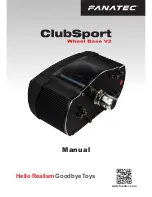
IOM-48
12
the new diaphragm (6). Place Locktite #242,
or equal, thread sealant onto the threads of
pivot screw (25); engage and tighten screw
(25) to 15-20 ft-lbs (21-27 N-m) torque.
NOTE:
Piston (3) must be held from rotating to pre vent
the multiple nested range springs (11) from
tilting away from a common vertical centerline
be tween hubs of lower case (2), piston (3) and
range spring (11).
15. Fold the diaphragm (6) skirt from its inside-
out ori en ta tion, down and around the piston’s
(3) skirt. Using a rounded-end tool, push the
diaphragm (6) down between the lower cas ing
(2) sidewall and the piston’s (3) skirt, forming
a “valley”. Work diaphragm (6) to ensure that
all folds or “puckers” are taken away. Press
the di a phragm’s (6) lower/outer beaded edge
into the groove. Again, smooth out all folds or
puckers in diaphragm (6).
16. Place a light coating of graphite powder
lu bri cant, (dry mo lyb de num disul
fi
de) on the
skirt ed areas of diaphragm (6), and into the
“valley”. This lubricant will prevent the di a -
phragm (6) from “sticking together” or abrad ing
itself dur ing piston (3) travel.
17. If
actuator (AA) is supplied with a manual hand-
wheel operator (MHWO), place a heavy-duty
wheel bearing grease, Lubriplate No. 130-AA,
or equal, into the v-notch in the head of the
pivot screw (25).
18. Inspect working of manual handwheel op er a-
tor (MHWO) located within the upper casing
(1) for signs of wear. Go to Subsection F. for
maintenance of manual handwheel operator
(MHWO).
19. Place properly oriented upper casing (1) down
onto the lower casing (2) with matchmarks
aligned and all casing
fl
ange bolt holes cen-
tered.
NOTE:
The casing
fl
anges (1) (2) will
not touch together.
20. Insert both extension bolts (28) through two
upper casing (1) bolt holes that are located
180° across from each other; these bolts
should extend through the lower casing (2)
fl
ange enough to engage its companion ex ten-
sion nut (42). Place a friction-reducing thread
lubricant on the lower exposed threads of the
extension bolts (28).
21. Place the same friction-reducing thread lu bri-
cant into the threaded portion of both ex ten sion
nuts (42).
NOTE:
Only one end of ex ten sion
nut (42) is threaded. It is not possible to en-
gage the extension bolting (28) (42) with the
extension nut (42) upside down; the threads
of the nut (42) will not engage.)
Engage both
extension nuts (42) until they draw tight to the
lower casing (2)
fl
ange’s underneath side.
Place one short bolt (27) through a bolt hole
of upper
fl
ange (1) to serve as an indicator. In
one-rev o lu tion increments and an al ter nat ing
cross-pattern, draw the casing (1) (2)
fl
anges
to wards each other. When there is at least
one-half of the indicator short bolt (27) threads
exposed through the lower casing (2)
fl
ange,
engage nut (41) until the short bolting (27)
(41) is
fi
nger-tight.
22. Place all short bolts (27) through the re main ing
upper casing (1)
fl
ange bolt holes, and engage
each ones nut (41) until the short bolting (27)
(41) is
fi
nger-tight.
23. In an alternating cross-pattern, tighten all
fl
ange bolt ing (27) (28) (41) (42) in one-
rev o lu tion increments. When all bolting (27)
(28) (41) (42) is hand-wrench tight, torque to
levels indicated below:
Item
Torque
Req’d
Nos.
Description
ft-lbs
N-m
27, 41
Short Bolting
15–18 20–24
28, 42 Extension Bolting
8–12 11–16
24. Connect a temporary instrument air source
di rect ly to the 1/4" FPT connection in the up-
per casing (1). Pres sur ize to the “Air Supply
Pressure” level as indicated in Table 2-4 of
WARNING
1. Elongated extension bolting (28) (42) is a safe ty
feature to allow relaxation of range springs (11)
to the piston’s (3) mechanical uptravel stop at
dis as sem bly.
2. Extension bolting (28) (42) should ONLY be
re placed with factory replacements; do NOT
sub sti tute con ven tion al bolting.
3. Extension bolting (28) (42) MUST be located
180° opposite of each other in the
fl
ange bolt-
ing array. Failure to heed could cause per son al
injury at a later dis as sem bly.










































